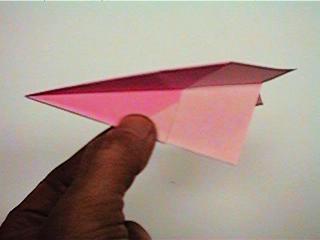
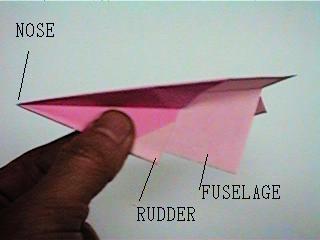
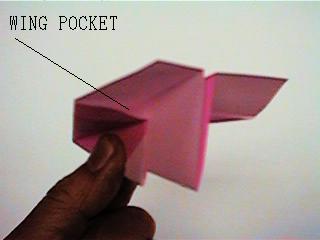
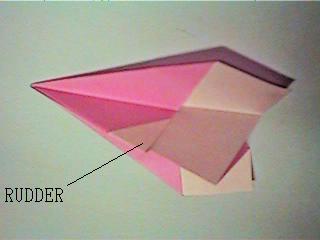
How to Fine-Tune Your Origami Airplane
After you have finished making your origami
airplane, you should take a moment to study it head-on. What you
want to look for is unformity on both sides of fuselage. Both
wings should be of the same thickness and line up with the
fuselage at the same angle. The reason for this is simple. If you
want the plane to fly perfectly straight, which it is capable of
doing when properly balanced, the air must pass over the same
wing area on both sides to maintain aneutral direction. If the
plane is not equal on both sides, that will definitely affect the
line of flight.
Again,check the plane head-on. If one wing appears larger than
the other,recrease the larger wing with your fingers until you
have reduced the size to that of the opposite wing.




Tune wing pocket
1. Does the plane develop enough lift?
Perhaps you are not throwing the plane hard enough. If it took a
nosedive, try throwing it with more force. If the plane sinks too
rapidly, try increasing the pockets in the wings slightly. You
can do this as follws: Hold the rudder with one hand. Then take
hold of the fuselage on the opposite side with your other hand.
Now pull the two section apart slightly. If you pull them too far
apart, just push them together.
Now make another test flight. The wings should now produce
sufficient lift.
2. Does the plane climb too quickly?
If so, make sure that you have inserted a paper clip in the nose,
because the plane needs forward weight to carry it ahead. If it
stillclimbs too sharply, you will have to reduce the depth of the
pockets in both wings, because they are producing too much lift.
Try recreasing both wings, because they are producing too much
lift. Try recreasing both wings, starting at the leading edges,
with your fingers.
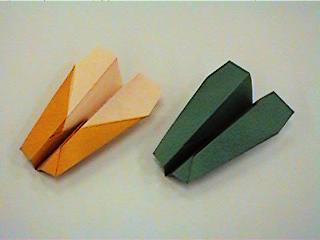
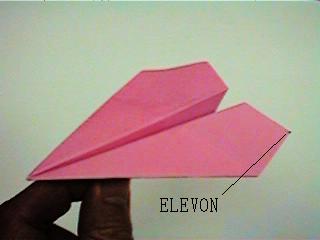
Tune elevon
1, If the nose drops and the plane dives into the ground, bend up the elevons that the back of the wings. A little bend goes a long way.
2, If the nose rises first and then drops, the
plane is stalling.
Bend down elevons the back of the wings. Keep your adjustments
small.
ELEVONS: The elevons,combining the functions of elevators and aileons, are used also as flaps.
Last update Aug.12,2002